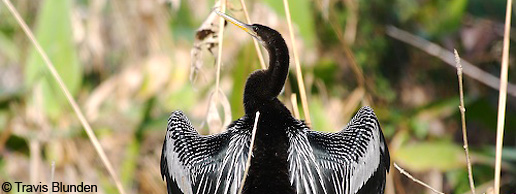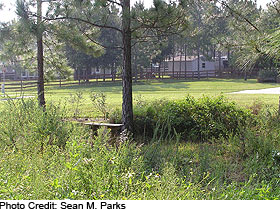
Landscaping for Wildlife
 Providing native ground covers, shrubs and trees with islands of vegetation using vertical layering is a great way to provide natural cover for wildlife. If you would like to increase cover for birds, consider adding bird and bat houses to your yard. Birds that nest in birdhouses or nest boxes are called “cavity-nesting” species because they nest in holes of trees. Cavity-nesting birds include woodpeckers, owls, chickadees, great-crested flycatchers, bluebirds, nuthatches, kestrels, etc. Even small mammals such as flying squirrels will roost in nest boxes!
Providing native ground covers, shrubs and trees with islands of vegetation using vertical layering is a great way to provide natural cover for wildlife. If you would like to increase cover for birds, consider adding bird and bat houses to your yard. Birds that nest in birdhouses or nest boxes are called “cavity-nesting” species because they nest in holes of trees. Cavity-nesting birds include woodpeckers, owls, chickadees, great-crested flycatchers, bluebirds, nuthatches, kestrels, etc. Even small mammals such as flying squirrels will roost in nest boxes!
In developed areas, cavity-nesting birds may not be able to find suitable trees (large, dead or dying). In the wild, these species create holes in trees or use existing cavities. Some birds are “secondary” cavity-nesters, which means that they don’t make their own cavity (e.g., owls, chickadees, bluebirds, etc.). They use a cavity that has been created by a “primary” cavity-nester (e.g., woodpeckers) or a natural cavity if they can find one. Build boxes for secondary cavity-nesters because primary cavity-nesters do not usually use nest boxes. Provide snags (dead trees) for the primary cavity-nesters so they can excavate a nesting hole.


 Location: http://yourdomain.edu
Location: http://yourdomain.edu